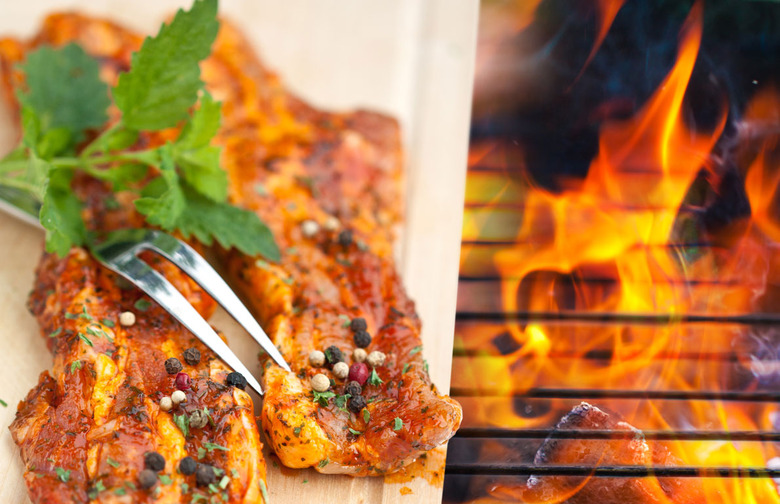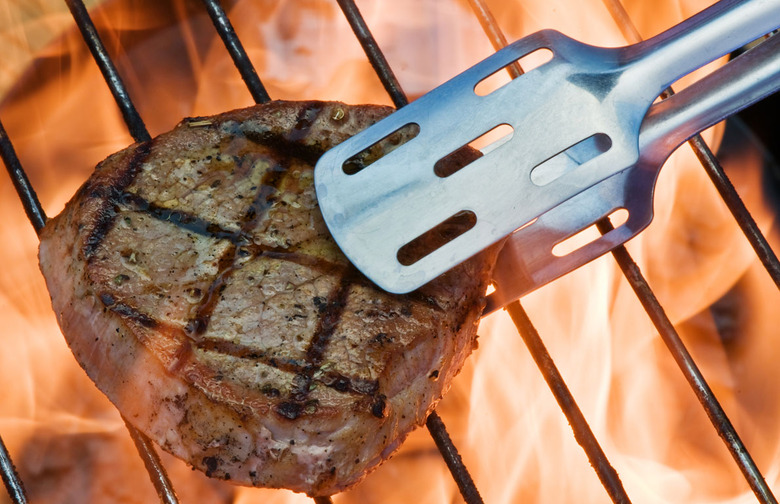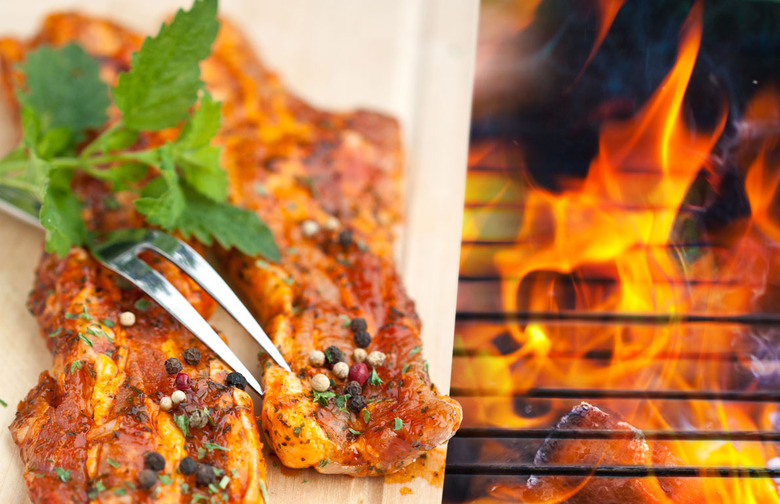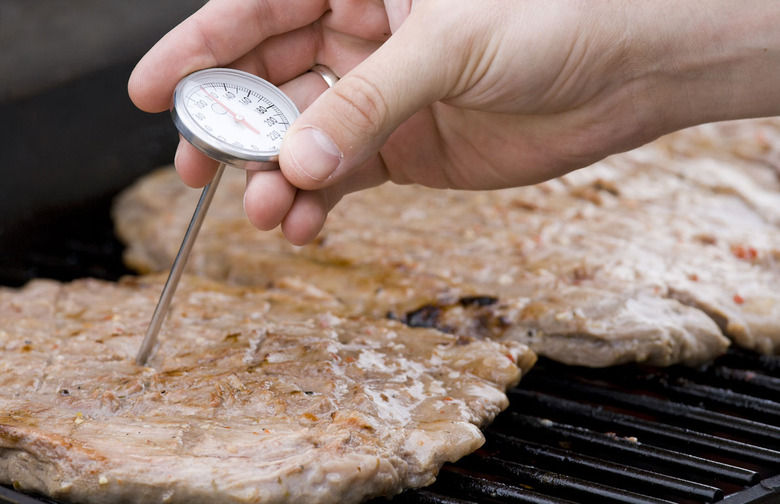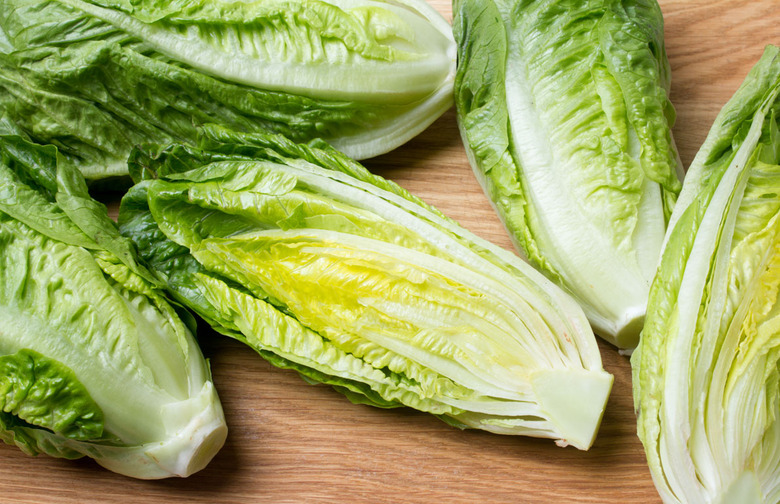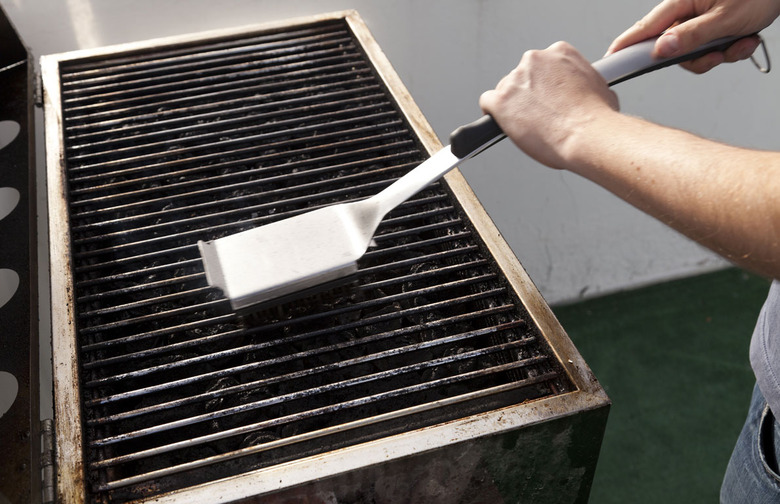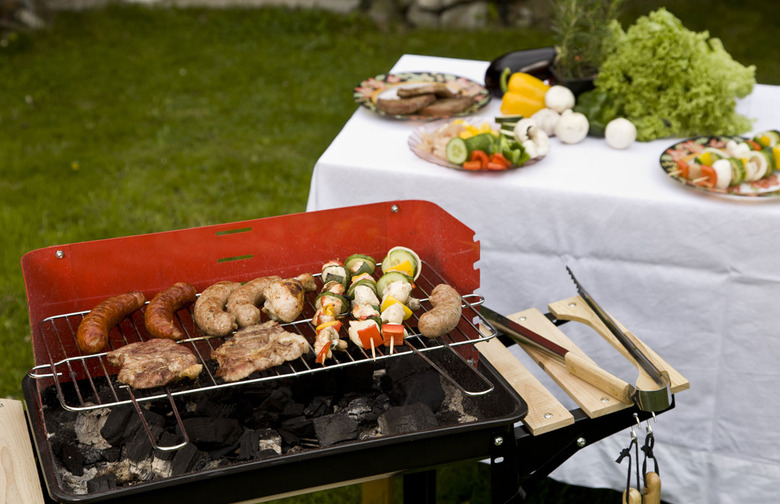Grilling: The Basics
Conquer your fear of the grill and become a pro by learning the basics. Here's what you need to know to get grilling this summer.
How to Light Your Grill
If you're using a charcoal grill, start by cleaning the grill and removing any ash or dirt. Then, add new charcoal — the amount of charcoal you need depends on the size of your grill and what you'll be cooking. To light the charcoal, arrange the pieces in a circle, piling the most in the center so that it resembles a pyramid; drizzle a small amount of lighter fluid on top of the pyramid; then light the charcoal with a long, lit match. Close the lid of the grill and let the charcoal burn until glowing, about 10 to 15 minutes.
Which Grilling Tools You’ll Need
Once you've got your grill lit and ready to go, you'll want to make sure you have all of the right accessories on hand for when you're grilling. Tools really all depend on preference and technique, but can also vary based upon the type of food you're grilling. Tongs and spatulas are great for most meat because you want to avoid puncturing the flesh so that you retain the juices of the meat, whereas prongs or forks work best for vegetables and other types of food.
Flavorful Grilling
Now that you've got your grill and tools set, you're ready to get cooking. The first thing to consider is what you're going to grill and how much you're going to flavor it. Lots of meats benefit from a marinade, which helps to tenderize and flavor your food before cooking. You can also experiment with spice rubs and sauces.
Timing
Many people feel it's easier to follow a recipe using an oven or a stovetop because there's generally a set time to follow. Grills give off varying levels of heat depending on how you've stacked your charcoal, how much charcoal you've used, and how strong your propane tank is. The easiest way to take the mystery out of grilling is to buy a meat thermometer and cook your meat to a specific temperature, but if you prefer another method, try the finger test. Touch your thumb to your pointer finger, then, with your other hand, feel your palm; that's what your meat will feel like when it's rare. Then, touch your thumb to your middle finger and feel your palm again; that's how medium-rare meat should feel. Continue with your other fingers — thumb to ring finger imitates medium and thumb to pinky well-done.
Know What to Cook
Grilling isn't just for meat; there are lots of other foods that are great on the grill. Try putting some char marks on romaine hearts before chopping them up for a salad, or grill fruit or slices of pound cake for dessert.
Cleaning Your Grill
You've succeeded in grilling: you picked out a grill, got it lit, and flavored and cooked your food perfectly — so now it's time for clean-up. It's important to remember to clean your grill immediately after using it; the heat from cooking makes it easier to scrape off any debris that has stuck to the grates. We like to think of it as a good distraction while you let the meat rest (which is often difficult to do for anxious and ravenous cooks). The most common type of cleaning method is to use a grill brush, but you can also clean your grill with balled up aluminum foil or by soaking the grill grates in something acidic, like coffee.
Go Beyond the Basics
Once you've got the basics down, learn more with The Daily Meal's Guide to Grilling and Barbecuing and you'll be grilling like a pro all summer long.
